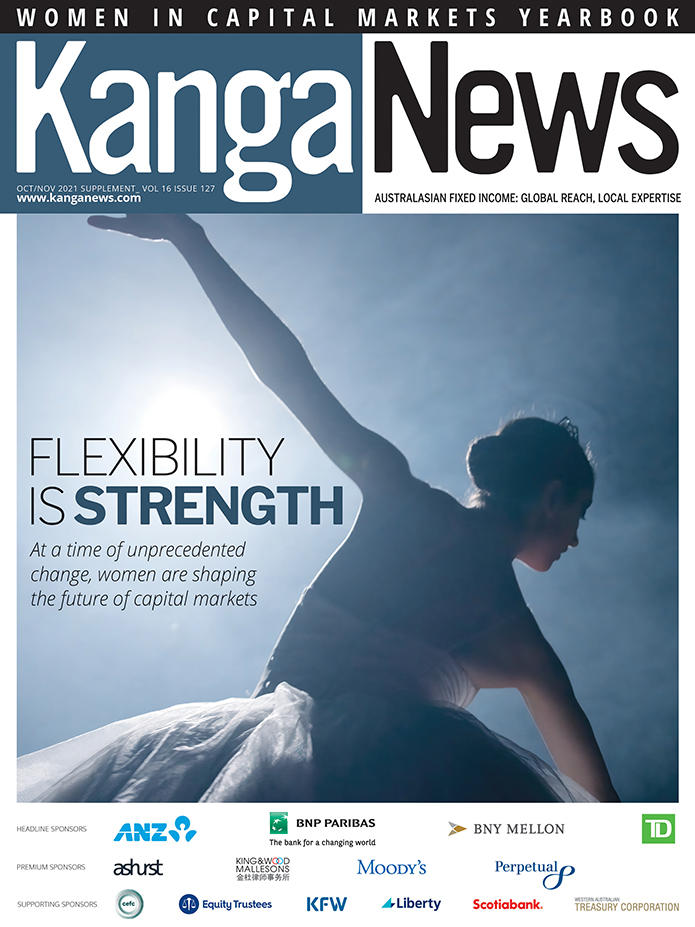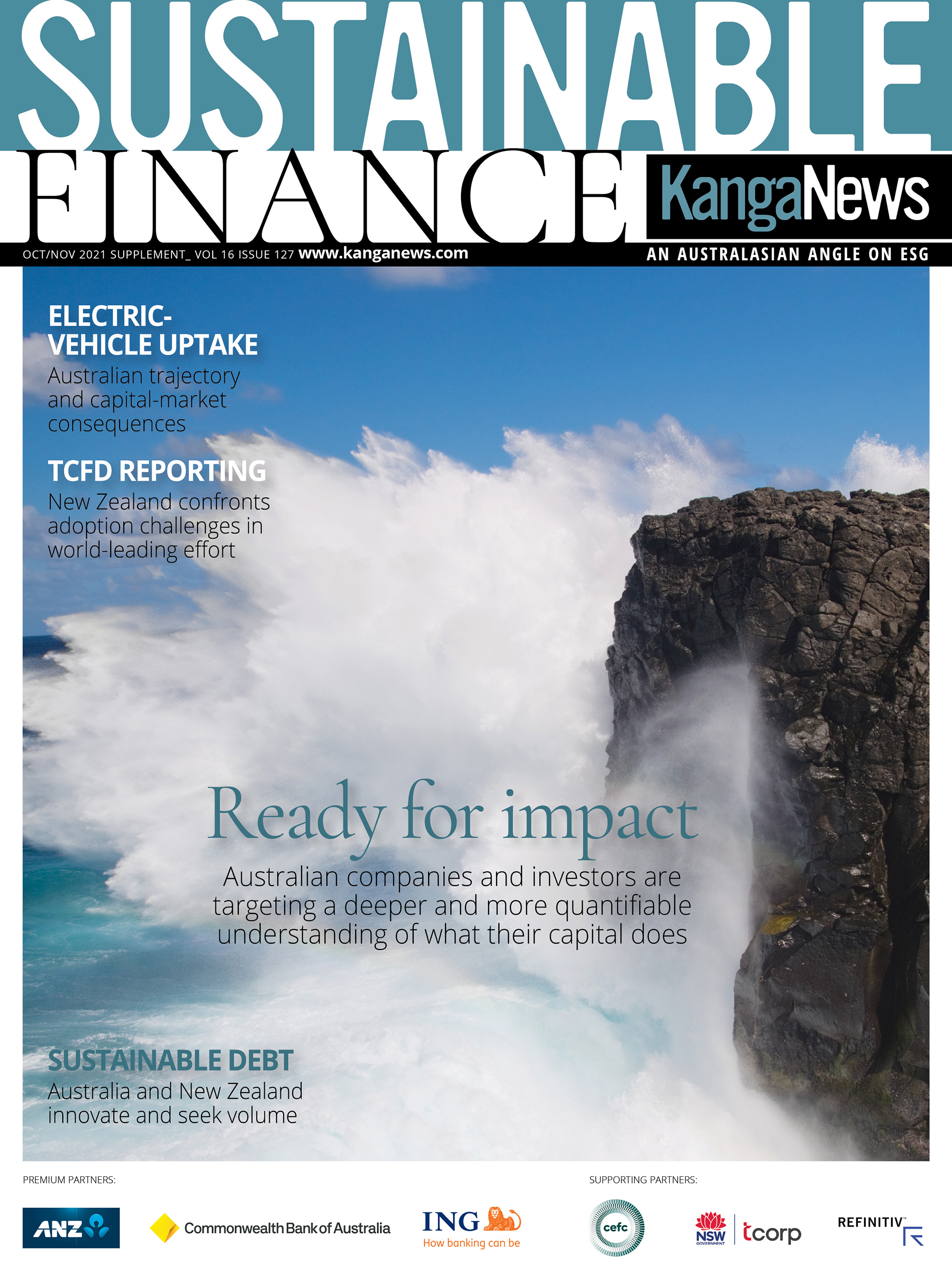
Sustainability bonds the right fit for Bank Australia’s debut
Bank Australia came to the market for its inaugural transaction on 20 August, pricing a A$125 million (US$92 million) three-year sustainability bond. The issuer tells KangaNews the nascent product was ideal for conveying its sustainability objectives, as well as attracting investors that would understand the mutual’s business model.
Until Bank Australia’s deal, led by ANZ, Australian domestic issuance of environmental, social and governance (ESG)-themed bonds this year has been limited to three tranches of securitisation, and Teachers Mutual Bank (Teachers Mutual)’s A$200 million print of ethically certified bonds in June, in 2018. There has been substantial issuance of green product from supranational, sovereign and agency issuers, but no other senior green bonds from domestic issuers.
Sustainability bond supply however, appears to be in the early stages of an upswing. Bank Australia’s is the second sustainability bond deal in the Australian market, after Australian Catholic University priced a A$200 million 10-year sustainability bond in July 2017. Macquarie University mandated a sustainability bond on 10 August, while the New South Wales government announced plans to issue sustainability bonds in its 2018/19 budget handed down in June this year.
Katharine Tapley, Sydney-based head of sustainable finance at ANZ, says the uptake of sustainability bond issuance has been propelled by the release of the social-bond principles by the International Capital Market Association earlier in 2018, which in conjunction with the green-bond principles form the sustainability bond guidelines.
“There is a recognition from investors that there is a need to create a resilient economy by addressing social issues as well as environmental issues. Equally, borrowers are recognising that there is an asset base outside of emissions-reducing activities which are worthy of being put into the capital markets for funding,” she says.
A large portion of the assets Bank Australia wanted to bring to investors’ attention are social assets, including lending to disability and community housing as well as affordable mortgages to low-income earners who have qualified through state-government schemes.
“These assets would not qualify for a green bond but they are good assets to invest in, which is why sustainability bonds are emerging as a product,” says Darren Dawson, treasurer of Bank Australia in Melbourne.
Investors are reasonably familiar with green buildings and renewable-energy infrastructure projects but some of the assets in this pool are not common, such as our mortgages that are backed by our conservation reserve.
Understanding the product
Being a new issuer and undertaking a transaction in what is still a relatively new product, the investor-relations work put in by Bank Australia prior to launch was particularly significant.
Adam Gaydon, Sydney-based director of syndicate at ANZ, tells KangaNews the roadshow consisted of meetings with around 25 investors, which he says is higher than usual for this type of issuer, with the sustainability aspect appealing to a wider cohort of investors than otherwise might have been interested.
Dawson says most of the investor questions were focused on the use of funds and which assets back the bonds. “Investors are reasonably familiar with green buildings and renewable-energy infrastructure projects but some of the assets in this pool are not common, such as our mortgages that are backed by our conservation reserve,” Dawson tells KangaNews.
Dawson goes on to explain that Bank Australia acquired a conservation reserve in response to its members’ desires for sustainability. This reserve enables members to offset the environmental impact of their own construction activities.
“This is how mutual banks work,” he says. "They allow members to achieve something like this which on their own would be very difficult.”
Impact reporting for ESG-themed bonds has also become important for investors, who have an increasing focus on the impact of their investments as well as the financial outcomes.
With the range of assets in the pool being diverse, Dawson says the mutual’s impact reporting will be similarly varied. The way in which the impact of conservation-backed loans is measured is very different from the way in which the impact of affordable housing is measured, so reporting will be asset-class specific.
Furthermore, for assets such as community housing the impact is far greater than the simple number of dwellings provided. Aware of this, Bank Australia will seek to include the qualitative impact of its assets in is reporting, which Dawson says is hard to measure but often gives as much value to investors as quantifiable measurement.
Demand response
With supply of domestic product that satisfies investors’ ESG mandates relatively limited in 2018, it is perhaps unsurprising that the demand response from investors to this transaction was robust.
The final order book exceeded A$250 million, with demand sufficient to tighten pricing to 130 basis points over three-month bank bills from guidance of 133 at launch. Gaydon reveals the pricing comparison most pointed to by investors was the recent Teacher’s Mutual three-year deal launched in June and which was marked at 130.5 basis points over three-month bank bills at the close on 17 August, according to ANZ.
Whether the sustainability aspect of the deal had a direct effect on pricing is difficult to ascertain, although deal sources suggest it is possible to make the argument that investors with ESG mandates would undoubtedly have found the transaction attractive given lack of similar product in the Australian market.
According to deal statistics provided by ANZ, almost 60 per cent of the deal was allocated to investors which were classified as either dark or light green (see chart 1).
Furthermore, Gaydon says the participation of local council and religious-entity investors was at a scale which has been previously unseen (see chart 2). Together, these two investor groups accounted for more than 20 per cent of the final allocation, with investors specifically attracted by the sustainability aspect of the transaction.
With Bank Australia’s business model attracting socially aware customers, reflecting strong growth in loans and deposits in recent years, Gaydon says it was flagged during the roadshow that the issuer intends to be in the market regularly, with the expectation that its funding requirement will increase as its balance sheet continues to grow.
Dawson says: “We have the intention to be in the market on an ongoing basis. We have growth plans for the asset pool and would certainly like to issue another sustainability bond.”

Source: ANZ 21 July 2018

Source: ANZ 21 July 2018

WOMEN IN CAPITAL MARKETS Yearbook 2021
KangaNews's annual yearbook amplifying female voices in the Australian capital market.

KANGANEWS SUSTAINABLE FINANCE H2 2021
KangaNews is proud to share cutting-edge information from the global and Australasian sustainable debt market.













